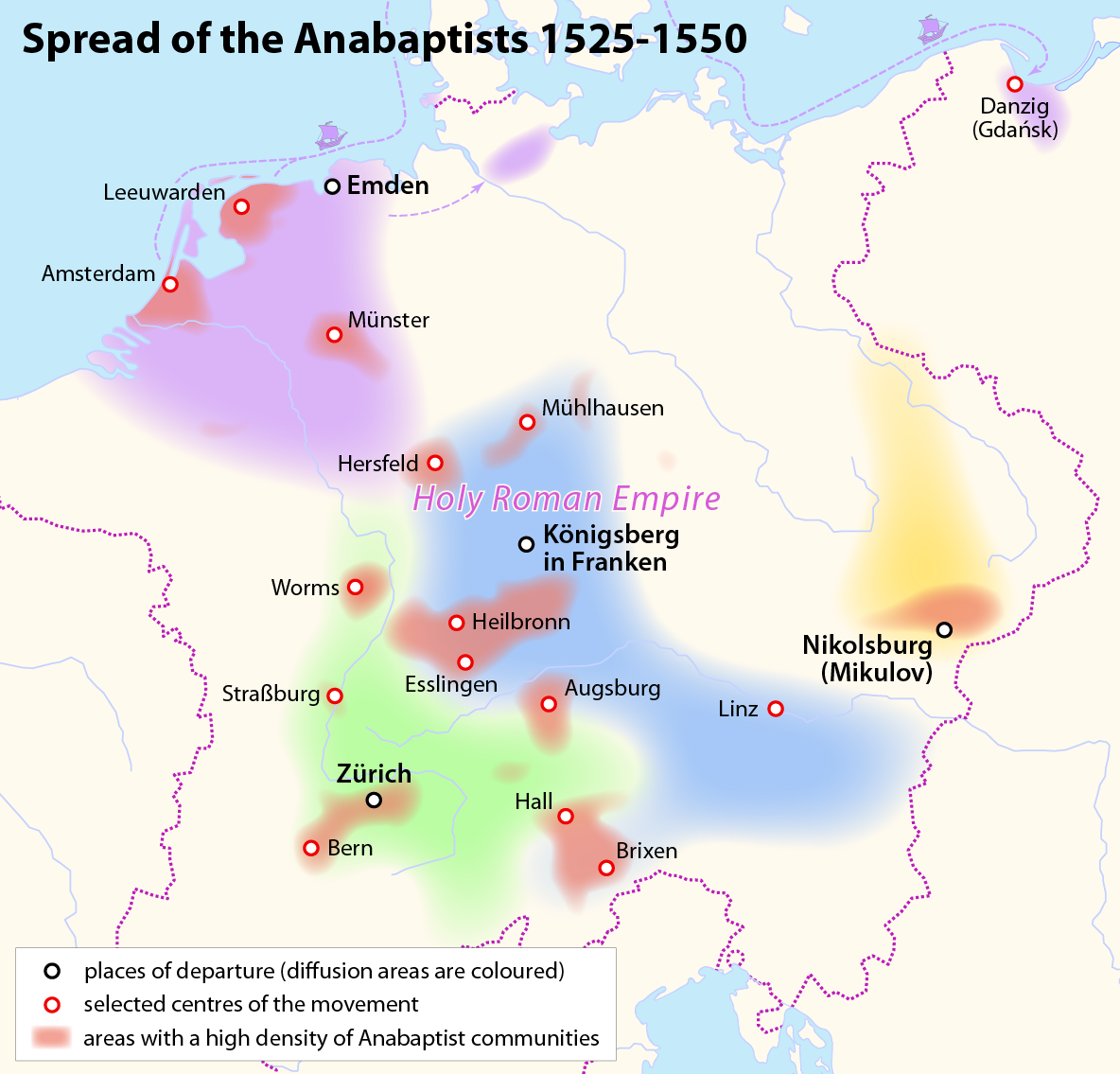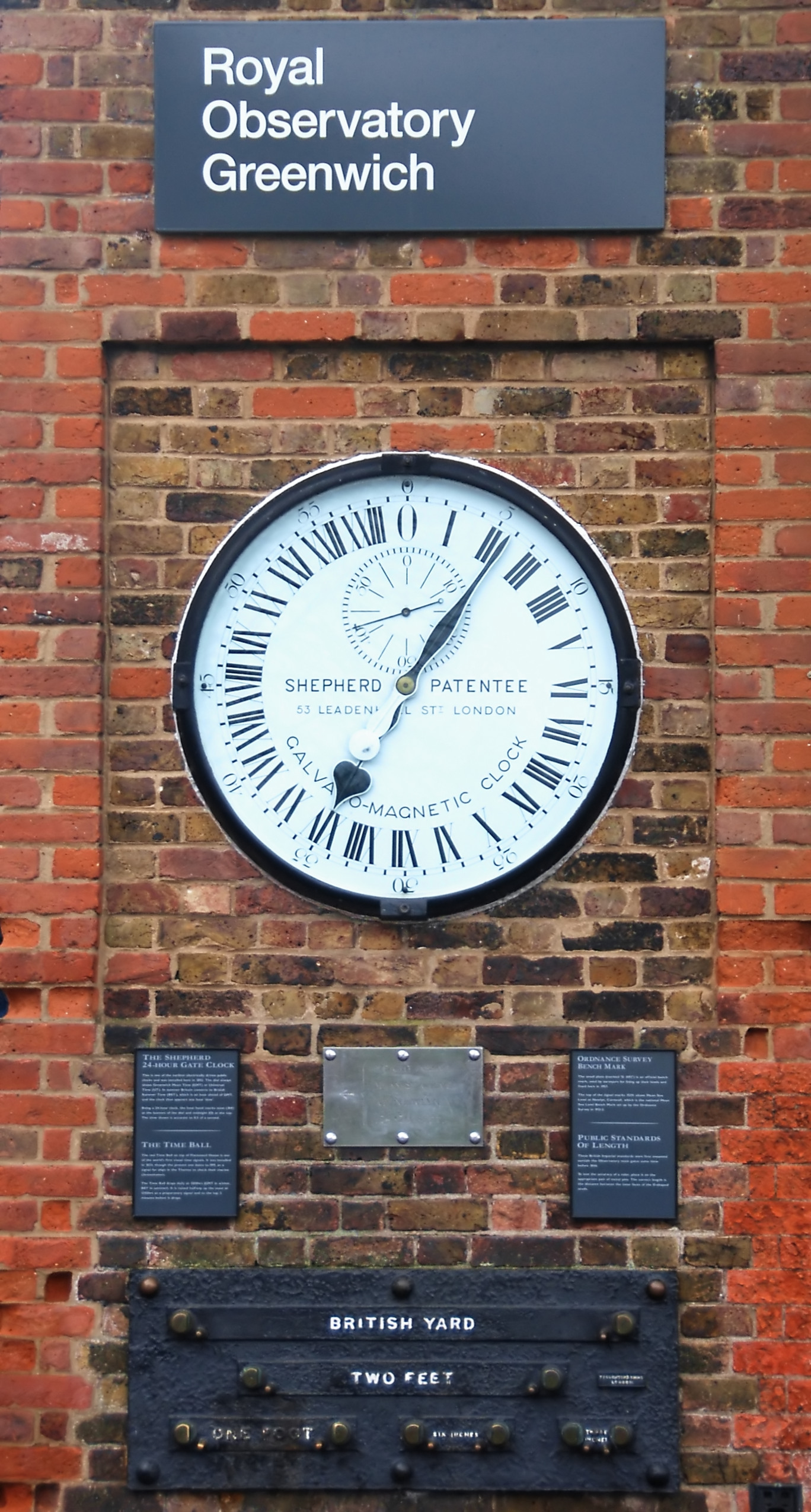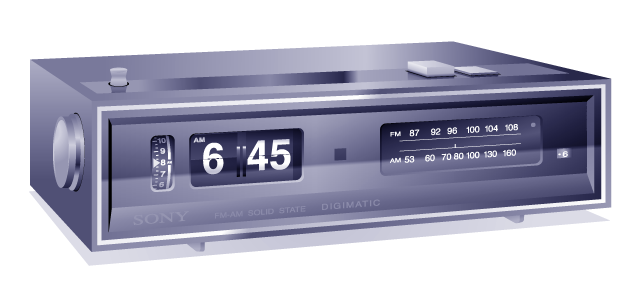|
Kroeger Clocks
The Kroeger family of Mennonite clockmakers, better known as Kroeger Clocks, was a well-known clockmaking family, the earliest recorded of whom was Peter D. Kroeger from Reimerswalde, near Danzig, Prussia in the mid-1700s. The clockmaking continued with Johann Kroeger, who moved in the late 18th century in the mass Mennonite migration to the Russian Empire and established his shop in Rosenthal, Chortitza, Ukraine. The clocks were made by five generations of the Kroeger family until the early 20th century and are known their high quality and elaborate design. The clocks were wall-hanging clocks and rope-driven, in the early years, often with floral patterns on the dial. Most Mennonite families had one of these clocks as they were often given as wedding presents and were passed on among Russian Mennonite families as valued heirlooms and collector's items. Other Mennonite clock-makers include Lepp, Hildebrandt, Mandtler, and Hamm. The Kroeger Clock Heritage Foundation was established ... [...More Info...] [...Related Items...] OR: [Wikipedia] [Google] [Baidu] |
Mennonite
Mennonites are groups of Anabaptist Christian church communities of denominations. The name is derived from the founder of the movement, Menno Simons (1496–1561) of Friesland. Through his writings about Reformed Christianity during the Radical Reformation, Simons articulated and formalized the teachings of earlier Swiss founders, with the early teachings of the Mennonites founded on the belief in both the mission and ministry of Jesus, which the original Anabaptist followers held with great conviction, despite persecution by various Roman Catholic and Mainline Protestant states. Formal Mennonite beliefs were codified in the Dordrecht Confession of Faith in 1632, which affirmed "the baptism of believers only, the washing of the feet as a symbol of servanthood, church discipline, the shunning of the excommunicated, the non-swearing of oaths, marriage within the same church, strict pacifistic physical nonresistance, anti-Catholicism and in general, more emphasis on "true C ... [...More Info...] [...Related Items...] OR: [Wikipedia] [Google] [Baidu] |
Clock
A clock or a timepiece is a device used to measure and indicate time. The clock is one of the oldest human inventions, meeting the need to measure intervals of time shorter than the natural units such as the day, the lunar month and the year. Devices operating on several physical processes have been used over the millennia. Some predecessors to the modern clock may be considered as "clocks" that are based on movement in nature: A sundial shows the time by displaying the position of a shadow on a flat surface. There is a range of duration timers, a well-known example being the hourglass. Water clocks, along with the sundials, are possibly the oldest time-measuring instruments. A major advance occurred with the invention of the verge escapement, which made possible the first mechanical clocks around 1300 in Europe, which kept time with oscillating timekeepers like balance wheels., pp. 103–104., p. 31. Traditionally, in horology, the term ''clock'' was used for ... [...More Info...] [...Related Items...] OR: [Wikipedia] [Google] [Baidu] |
Gdańsk
Gdańsk ( , also ; ; csb, Gduńsk;Stefan Ramułt, ''Słownik języka pomorskiego, czyli kaszubskiego'', Kraków 1893, Gdańsk 2003, ISBN 83-87408-64-6. , Johann Georg Theodor Grässe, ''Orbis latinus oder Verzeichniss der lateinischen Benennungen der bekanntesten Städte etc., Meere, Seen, Berge und Flüsse in allen Theilen der Erde nebst einem deutsch-lateinischen Register derselben''. T. Ein Supplement zu jedem lateinischen und geographischen Wörterbuche. Dresden: G. Schönfeld’s Buchhandlung (C. A. Werner), 1861, p. 71, 237.); Stefan Ramułt, ''Słownik języka pomorskiego, czyli kaszubskiego'', Kraków 1893, Gdańsk 2003, ISBN 83-87408-64-6. * , )Johann Georg Theodor Grässe, ''Orbis latinus oder Verzeichniss der lateinischen Benennungen der bekanntesten Städte etc., Meere, Seen, Berge und Flüsse in allen Theilen der Erde nebst einem deutsch-lateinischen Register derselben''. T. Ein Supplement zu jedem lateinischen und geographischen Wörterbuche. Dresden: G. Schönf ... [...More Info...] [...Related Items...] OR: [Wikipedia] [Google] [Baidu] |
Kingdom Of Prussia
The Kingdom of Prussia (german: Königreich Preußen, ) constituted the German state of Prussia between 1701 and 1918. Marriott, J. A. R., and Charles Grant Robertson. ''The Evolution of Prussia, the Making of an Empire''. Rev. ed. Oxford: Clarendon Press, 1946. It was the driving force behind the unification of Germany in 1866 and was the leading state of the German Empire until its dissolution in 1918. Although it took its name from the region called Prussia, it was based in the Margraviate of Brandenburg. Its capital was Berlin. The kings of Prussia were from the House of Hohenzollern. Brandenburg-Prussia, predecessor of the kingdom, became a military power under Frederick William, Elector of Brandenburg, known as "The Great Elector". As a kingdom, Prussia continued its rise to power, especially during the reign of Frederick II "the Great".Horn, D. B. "The Youth of Frederick the Great 1712–30." In Frederick the Great and the Rise of Prussia, 9–10. 3rd ed. Lon ... [...More Info...] [...Related Items...] OR: [Wikipedia] [Google] [Baidu] |
Mennonites
Mennonites are groups of Anabaptist Christian church communities of denominations. The name is derived from the founder of the movement, Menno Simons (1496–1561) of Friesland. Through his writings about Reformed Christianity during the Radical Reformation, Simons articulated and formalized the teachings of earlier Swiss founders, with the early teachings of the Mennonites founded on the belief in both the mission and ministry of Jesus, which the original Anabaptist followers held with great conviction, despite persecution by various Roman Catholic and Mainline Protestant states. Formal Mennonite beliefs were codified in the Dordrecht Confession of Faith in 1632, which affirmed "the baptism of believers only, the washing of the feet as a symbol of servanthood, church discipline, the shunning of the excommunicated, the non-swearing of oaths, marriage within the same church, strict pacifistic physical nonresistance, anti-Catholicism and in general, more emphasis on "true ... [...More Info...] [...Related Items...] OR: [Wikipedia] [Google] [Baidu] |
Rosenthal (company)
Rosenthal GmbH is a German manufacturer of porcelain products and other household goods. The original firm was founded in 1879 in Selb, Bavaria. Since 2009, Rosenthal has been owned by the Italian company Sambonet Paderno Industrie (Arcturus Group). History Rosenthal was originally founded in 1879 as a family business. The founder, Philipp Rosenthal, moved his porcelain painting from Werl in North Rhine-Westphalia to Selb in Bavaria, where he industrialized in the castle Erkersreuth with his painting workshop. In 1897, Philipp Rosenthal founded the company Bauer, Rosenthal & Co. in Kronach, as well as Philipp Rosenthal & Co. AG. In 1908, Rosenthal bought the porcelain manufacturer Thomas in Marktredwitz, and the porcelain company Zeidler & Co. in 1917. In 1921, the company took over the Krister Porzellanmanufaktur in Wałbrzych, Silesia. The factory was closed in 1945, but the brand was revived in 1951 and used until 1971. In the period of national socialism, Philipp R ... [...More Info...] [...Related Items...] OR: [Wikipedia] [Google] [Baidu] |
Chortitza
Chortitza Colony was a volost Yekaterinoslav Governorate granted to Plautdietsch-speaking Russian Mennonite for colonization northwest of Khortytsia Island and is now part of Zaporizhzhia, Ukraine. Chortitza was founded in 1789 by Mennonite settlers of Dutch ancestry from the Vistula delta and consisted of many villages. It was the first of many Mennonite settlements in the Russian Empire. Because the Mennonites living in these villages emigrated or were evacuated or deported at the end of World War II, or emigrated after the collapse of the Soviet Union no Mennonites are living there today. Background Vistula delta Mennonites, mostly of Dutch descent, had lived in the Vistula delta in the Kingdom of Poland from the middle of 16th century. Because of their fast growing population, finding more arable land was a concern. When the region became part of the Kingdom of Prussia in 1772 through the First Partition of Poland, the Prussian Government enacted a law making it difficult fo ... [...More Info...] [...Related Items...] OR: [Wikipedia] [Google] [Baidu] |
Ukraine
Ukraine ( uk, Україна, Ukraïna, ) is a country in Eastern Europe. It is the second-largest European country after Russia, which it borders to the east and northeast. Ukraine covers approximately . Prior to the ongoing Russian invasion, it was the eighth-most populous country in Europe, with a population of around 41 million people. It is also bordered by Belarus to the north; by Poland, Slovakia, and Hungary to the west; and by Romania and Moldova to the southwest; with a coastline along the Black Sea and the Sea of Azov to the south and southeast. Kyiv is the nation's capital and largest city. Ukraine's state language is Ukrainian; Russian is also widely spoken, especially in the east and south. During the Middle Ages, Ukraine was the site of early Slavic expansion and the area later became a key centre of East Slavic culture under the state of Kievan Rus', which emerged in the 9th century. The state eventually disintegrated into rival regional powers and ... [...More Info...] [...Related Items...] OR: [Wikipedia] [Google] [Baidu] |
Russian Mennonite
The Russian Mennonites (german: Russlandmennoniten it. "Russia Mennonites", i.e., Mennonites of or from the Russian Empire occasionally Ukrainian Mennonites) are a group of Mennonites who are descendants of Dutch Anabaptists who settled for about 250 years in the Vistula delta in Poland and established colonies in the Russian Empire (present-day Ukraine and Russia's Volga region, Orenburg Governorate, and Western Siberia) beginning in 1789. Since the late 19th century, many of them have come to countries throughout the Western Hemisphere. The rest were forcibly relocated, so that very few of their descendants now live at the location of the original colonies. Russian Mennonites are traditionally multilingual with Plautdietsch (Mennonite Low German) as their first language and lingua franca. In 2014 there are several hundred thousand Russian Mennonites: about 200,000 in Germany, 100,000 in Mexico, 70,000 in Bolivia, 40,000 in Paraguay, 10,000 in Belize, tens of thousand ... [...More Info...] [...Related Items...] OR: [Wikipedia] [Google] [Baidu] |
Mennonite Heritage Village
Mennonite Heritage Village is a museum in Steinbach, Manitoba, Canada telling the story of the Russian Mennonites in Canada. The museum contains both an open-air museum open seasonally, and indoor galleries open year-round. Opened in 1967 and expanded significantly since then, the Mennonite Heritage Village is a major tourist attraction in the area and officially designated as a Manitoba Signature Museum and Star Attraction. Approximately 47,000 visitors visit the museum each year. History The impetus for the museum began in the early 1960s after the destruction of a number of historic buildings in the area. Retired teacher John C. Reimer began to collect artifacts and established the Reimer Store museum on Main Street in Steinbach, a building that was later moved to the current museum. A committee was established in 1964 and the museum, originally called Mennonite Village Museum was opened to the public in 1967. The museum changed its name to Mennonite Heritage Village in 1987. ... [...More Info...] [...Related Items...] OR: [Wikipedia] [Google] [Baidu] |
Steinbach, Manitoba
Steinbach () ( Plautdietsch: /ˈʃte̞nbah/ or /ˈʃte̞nbax/) is a city located about south-east of Winnipeg, Manitoba, Canada. Steinbach is the third-largest city in Manitoba, with a population of 17,806, and the largest community in the Eastman region. The city is bordered by the Rural Municipality of Hanover to the north, west, and south, and the Rural Municipality of La Broquerie to the east. Steinbach was first settled by Plautdietsch-speaking Mennonites from the Russian Empire in 1874, whose descendants continue to have a significant presence in the city today. Steinbach is found on the eastern edge of the Canadian Prairies, while Sandilands Provincial Forest is a short distance east of the city. Steinbach's economy has traditionally been focused around agriculture; however, as the regional economic hub of southeastern Manitoba, Steinbach now has a trading area population of about 50,000 people and significant employment in the financial services industry, au ... [...More Info...] [...Related Items...] OR: [Wikipedia] [Google] [Baidu] |
Clock Manufacturing Companies
A clock or a timepiece is a device used to measure and indicate time. The clock is one of the oldest human inventions, meeting the need to measure intervals of time shorter than the natural units such as the day, the lunar month and the year. Devices operating on several physical processes have been used over the millennia. Some predecessors to the modern clock may be considered as "clocks" that are based on movement in nature: A sundial shows the time by displaying the position of a shadow on a flat surface. There is a range of duration timers, a well-known example being the hourglass. Water clocks, along with the sundials, are possibly the oldest time-measuring instruments. A major advance occurred with the invention of the verge escapement, which made possible the first mechanical clocks around 1300 in Europe, which kept time with oscillating timekeepers like balance wheels., pp. 103–104., p. 31. Traditionally, in horology, the term ''clock'' was used for a striki ... [...More Info...] [...Related Items...] OR: [Wikipedia] [Google] [Baidu] |


.jpeg/1200px-Brama_Zuraw_W_Gdansku_(153003103).jpeg)



